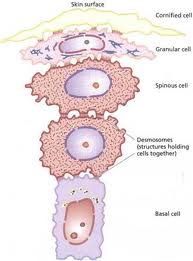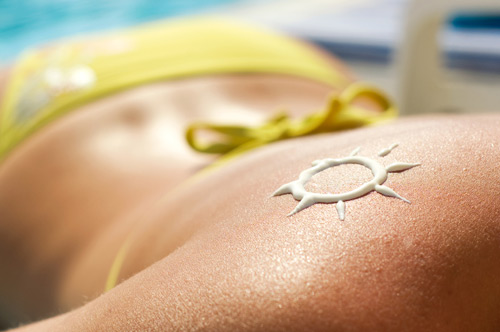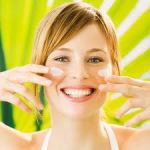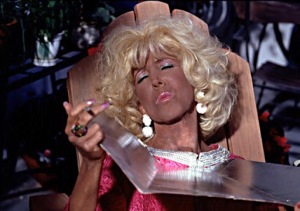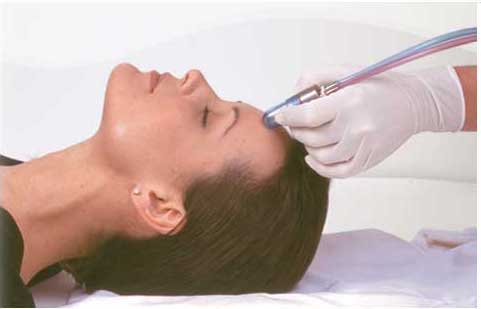
There are a lot of misnomer’s about Microdermabrasion. I wanted to break the entire process down for you, explain each detail of what it is, how it works and what it can do for your clients skin. I believe this is a powerful tool in an Aestheticians room and should be utilized.
What is Microdermabrasion?
Let’s break it down…
Micro/Derm/Abrasion: Microsopically Abrade (remove) the top layer of the Epidermis to improve the skins elasticity, texture and clarity.
A physical (not chemical in which certain acids dissolve the despinosum which is the glue that hold all the dead cells in its place) removal of dead skin cells by way of a flow of crystals (aluminum oxide, salt, baking soda, oatmeal or diamond tip) that loosen and lift the cells, then a vacuum (negative pressure) draws the skin close to the apparatus, sweeps away the cells and crystals while increasing circulation of lymph and blood. Under the microscope, the skin looks like overlapping fish scales.
How does microdermabrasion create results?
There are two ways Microdermabrasion create results, Epidermis and the Subcutanious layers of the skin.
Epidermis- the surface of the skin. The skin is alive and will protect itself and when you exfoliate the skin it goes into survival mode. The Basal Layer (I like to call it the nursery) is where all the cells are produced and it start kicking out new cells, these new cells replace the old cells that are removed from the Epidermis, hence cellular turnover is increased. During this process collagen and elastin fibroblasts (connective fibers of the skin that supports the skins form) both get stimulated and increases the firmness of the skin. I like to explain to my clients in this way, “Microdermabrasion is a controlled trauma procedure. The nursery layer where all the cells are generated from gets stimulated. After 3-4 treatments depending on the client, the Basel Layer gets fatigued and calls for back up from the dermis and then collagen and elastin are produced.”
subcutaneous under the skin where blood and lymph are present. Lymph and blood flow are increased due to the negative pressure that removes the crystals and dead skin cells from the surface of the skin and draws them back into the machine. Lymph is the toxic waste dump of the body and has two functions; lymph supplies all cells with moisture and nutrients. Lymph also draws toxins away from cells keeping them in optimal health. Lymph does not move throughout the body on its own; it moves by way of muscle contraction, message and natural body movement. There is a specific direction to move the apparatus so that the negative pressure (massage) can be fully utilized, always moving out and down towards the lymph nodes that specifically filter the lymph. Oxidation to the skin happens when the negative pressure not only moves the lymph but also draws blood to the surface of the skin which stimulates circulation nourishing and oxidizing the skin.
What is the treatment regime?
Anyone who wants healthier and younger looking skin can have a treatment done, age is applicable on what the client is trying to achieve. Clients can have 1 treatment per week for consecutive weeks (up to 12 if needed) to achieve optimal results. As a therapist, I want to make sure that a clients goes through their treatment regime to get them through a full cell cycle. Cell cycle can be anywhere from 21-45 days. Getting them through a full cell cycle makes sure that they will have the best results. Having treatments close to one another makes sure that the basal layer is continually stimulated; this is important for elastin and collagen syntheses.

Maintaining is needed and encouraged due to the inability to stop the ageing process. Clients can have 1 treatment per month, the every 3rd month and so on. Remember that all clients are not the same. Each individuals and each have different home regimes and lifestyles. The professional must listen and take account their specific needs and desired results. It is always recommended to each client to use
pharmaceutical skin care products with SPF to protect the newly exfoliated skin. When you have removed the dead skin layer, skin care products can be more quickly penetrated, providing the skin with immediate surge of moisture, nutrients, acids and vitamins. Always inform them that 20% of their results happen in the treatment room and 80% of their results happen at home.
What are some things to be aware of?
It is extremely important and it is the professionals responsibility to prescreen each potential clients. .Some clients will not be able to utilize the microdermabrasion procedure because of the following:
*Active or open acne lesions such as pustules.
*Rosecia- depends on each client. Never during a time when the skin has inflammation due to blood circulation.
*pregnancy Hyperpigmentation masking may be stimulated due to hormonal levels.
*dermatitis inflammatory condition that may flare up.
*Broken capillaries the vacuum or negative pressure may further the condition.
*Herpes Simplex I & II- Preexisting condition. Can cause an outbreak for the client.
*HIV & AIDS- The skin is thinned and can cause lesions due to a inefficient immune system
*Diabetes- The skin is extremely compromised with many medications.
*Tattoos- Tattoos can be lightened
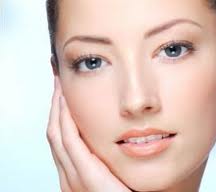
What can you expect from getting treatments?
I like to tell my clients that results vary from client to client. I also like to explain that the longer it took to get the skin conditions a client has, the more treatments a client needs. Overall the skin becomes healthier and appears fresher, younger. Sun damage is reversed. The following results can be achieved:
*Hyperpigmentation such as age/liver spots are lightened and/or removed.
*Acne scars and pore size are minimized thus texture of the skin is improved.
*Tone and clarity due to blood and lymph circulation looks evened out.
*Elasticity and firmness are increased due to the exfoliation process.
*Restoration of the skin to its natural beauty and diminishing the appearance of fine lines and wrinkles are achieved.
*Decrease of oil production in oily complexions, safe for certain Rosacia clients.
What is a treatment like, from start to finish?
Wear gloves and a mask.
*Cleanse twice with lukewarm water and NO steam, no need to draw up circulation before the use of the vacuum.
*The use of an alcohol based toner/astringent/solution thoroughly dries the skin due to fact evaporation and removes all evidence of cleanser. Since this is a dry process the professional must not leave the skin moist. The use of a 2%-5% chemical acid can start the exfoliating process due to dissolving the dead skin cells even before they are loosened and swept away, and kills bacteria as well.
*Microdermabrasion procedure. Moving the apparatus down and out towards the lymph nodes.
*Removal of all crystals. This differs and depends on which crystals are being utilized.
*Extractions are best and easiest at this time.
*Ultrasound with Vitamin C and retinol (take advantage of the skin)
*Mask application re nourishes, moisturizes, calms and treats.
*Moisturizer with an SPF to protect the new skin from further damage. This skin is now photosensitive.
I recommend everyone try a treatment. Do your homework and get one!!! Happy Exfoliating everyone!
